Made in China: Chinese Inventions Part 2
Advertisements:
Li Yuming, a local farmer who is interested in scientific invention, works on his unfinished miniature submarine [Xiaguang V] on the outskirts of Wuhan, capital of central China's Hubei province August 24, 2007. [Xiaguang V], which is 3-metre long, 1.2-metre in height, has a maximum diving depth of 20 metres, and can hold two adults and one child at the same time. The submarine will be used for tour after safety test, local media said. (Photo by Reuters/Stringer)
Zhao Xiuguo drives a homemade model of Formula One car in Tangshan, Hebei Province, some 180km (113 miles) east of Beijing July 21, 2006. Zhao Xiuguo and his brother Zhao Xiushun built the car from scrap metal and said that they wanted to design and build the first Formula One racecar in China. (Photo by Claro Cortes IV/Reuters)
Farmer Shu Mansheng prepares to take off with his homemade ultralight aircraft in Wuhan, Hubei province May 10, 2010. The 4.5-meter-long (15ft) ultralight, powered by two motor engines, took Shu eight months to build and cost him 5,000 yuan (733 USD), local media reported. (Photo by Reuters/China Daily)
Chinese farmer Yang Youde pushes his homemade cannon near his farmland on the outskirts of Wuhan, Hubei province June 6, 2010. Yang's cannon, which is made out of a wheelbarrow, pipes and firing rockets, is used to defend his fields against property developers who wants his land. (Photo by Reuters/Stringer)
A worker polishes the surface of an unfinished miniature submarine at a workshop of Zhang Wuyi, a local farmer who is interested in scientific inventions, in Qingling village, on the outskirts of Wuhan, capital of central China's Hubei province August 29, 2011. Zhang has successfully tested his self-made miniature submarine "Shuguang Hao", which is 3.6 m (12 feet) long, 1.8 m (6 feet) high, has a maximum diving depth of 20 m (65 feet), can travel at a speed of 20 km per hour for 10 hours underwater and is shaped as a dolphin. [I hope to sell my submarine as a civil product with the price of about 100,000 yuan ($15,670) after safety tests, and a merchant has decided to order one in this month], Zhang said. (Photo by Jason Lee/Reuters)
Zhang Xuelin sits inside his self-made aircraft at his home before its test flight in Jinan, Shandong province, November 28, 2012. Zhang, a farmer who dropped out of primary school in his early years, spent around 2,000 yuan ($321) to build a plane around a motorcycle, using wood and plastic boards. The plane, which took 11 months to build, failed in its test flight. (Photo by Reuters/China Daily)
Gao Hanjie installs the rotor blades on his homemade helicopter in Shenyang, Liaoning province June 9, 2010. The graphic designer and helicopter enthusiast, with help from his friends, has spent more than a month building the 6-meter-long and 350kg helicopter. Gao claims he will eventually fly the contraption as a personal project according to local media. (Photo by Sheng Li/Reuters)
Amateur inventor Tao Xiangli operates his homemade submarine in a lake on the outskirts of Beijing September 3, 2009. Tao, 34, made a fully functional submarine, which has a periscope, depth control tanks, electric motors, manometer, and two propellers, from old oil barrels and tools which he bought at a second-hand market. He took 2 years to invent and test the submarine which costs 30,000 yuan ($4,385). (Photo by Christina Hu/Reuters)
A worker paints a single-seater submarine designed by Zhang Wuyi and his fellow engineers at a shipyard in Wuhan, Hubei province May 7, 2012. Zhang, a 37-year-old local farmer, who is interested in scientific inventions, has made six miniature submarines with several fellow engineers, one of which was sold to a businessman in Dalian at a price of 100,000 yuan ($15,855) last October. The submarines, mainly designed for harvesting aquatic products, such as sea cucumber, have a diving depth of 20-30 metres, and can travel for 10 hours, local media reported. (Photo by Reuters/Stringer)
Wu Zhongyuan, 22, a local farmer, poses with his self-made helicopter, in Jiuxian county, Henan province August 1, 2009. The local government later halted Wu's plan to fly the helicopter out of safety concerns. The aircraft, powered by a 150cc engine, took Wu two months to build and cost more than 10,000 yuan ($1,460), China Daily reported. (Photo by Reuters/China Daily)
An engineer working for Zhang Wuyi looks at a double-seater submarine during a test operation at an artificial pool near a shipyard in Wuhan, Hubei province May 7, 2012. (Photo by Reuters/Stringer)
A smaller version of Noah's Ark of China, a six-ton (5,443 kg) ball container built by Chinese inventor Yang Zongfu, undergoes a burning test in Yiwu, Zhejiang province, August 6, 2012. According to local media, Yang spent two years and 1.5 million RMB (235,585 USD) to build the four-metre diameter vessel, which has been tested capable of housing a three-person family and sufficient food for them to live in 10 months. The vessel was designed to protect people inside from external heat, water and external impact. (Photo by Reuters/China Daily)
Sun Jifa moves a brick as he works to build his new house in Yong Ji county, Jilin province, September 25, 2012. Chinese farmer Sun, who lost his forearms in a dynamite fishing accident 32 years ago, could not afford to buy prosthesis. He spent two years guiding his two nephews to build him prosthesis from scrap metal, plastic and rubber. Over the years, Sun and his nephews have built about 300 prosthetic limbs for people in need, charging 3000 RMB ($476) each. (Photo by Sheng Li/Reuters)
A 49-year-old electric bike mechanic who identified himself only as Wu welds a component to fit onto his newly-made robot (R) at his repair shop in Shenyang, Liaoning province June 25, 2012. Wu spent over 10 days to make this nearly two-meter high robot using parts from abandoned electric bikes. The robot, which is able to walk and pump up tires by itself, is still under modification, according to local media. (Photo by Reuters/Stringer)
A self-styled Chinese inventor tests his homemade helicoptor next to his apartment in Beijing June 25, 2003. Yu Jun follows in the footsteps of his younger brother who lost his life in a national park in central China at the end of a 20 year search for the legendary [Bigfoot], and intends to continue the quest from the sky. Without any formal education in aerospace science, Yu Jun spent five years constructing the helicopter from spare parts belonging to a dilapidated [Lada] automobile (in back). (Photo by Reuters/China Photo)
Chinese shipbuilders stand on a submarine designed by a farmer Li Yuming (not pictured) on the Yangtse River in Wuhan, central China's Hubei province in this picture taken September 24, 2005. The submarine, 9.8 meters long, two meters wide, and four meters high, was built by some ten shipbuilders in seven months. Maritime Administration of the Yangtse River banned the submarine's trial voyage because it did not undertake any navigational procedure. (Photo by Reuters/China NewsPhoto)
Wen Jiaquan (2nd L), 54-year-old motorcycle mechanic, moves his self-made helicopter in Qingping township of Chongqing municipality, July 28, 2013. Wen and his family spent over 10,000 yuan (1,630 USD) and more than three months to build this 4.2-metre-long, 2.8-metre-high helicopter using mostly motorcycle components and a used car engine, local media reported. (Photo by Reuters/Stringer)
A man drives an improvised tractor with 12 brooms tied in the rear, as he tries to clean a road in Mohe, Heilongjiang province, August 31, 2013. (Photo by Reuters/Stringer)
Ding Shilu (L) tests the engine of his home-made aircraft before conducting a test flight on the outskirts of Shenyang, Liaoning province, August 6. 2013. Ding, a 65-year-old migrant worker, spent around 2,000 yuan ($327) to build this 5-metre-long, 4.5-metre-high plane using components from motorcycles and electric bicycles. Ding failed his fourth test flight on Tuesday since he started his project four years ago, local media reported. (Photo by Sheng Li/Reuters)
A Chinese flag is seen as Liu Wanyong performs on his invention, an improvised bicycle which is held afloat by plastic tubes, in Zhenning, Guizhou province, August 29, 2013. Liu, 52, is a grassroots inventor who mostly creates things that are related with the traditional village lives of the ethnic minority people in Guizhou. (Photo by Reuters/Stringer)
A worker climbs up from Zhang Wuyi's newly designed unmanned submarine that captures sea cucumbers, during a test operation at an artificial pool near a shipyard in Wuhan, Hubei province, March 26, 2013. Zhang, a 38-year-old local farmer who is interested in scientific inventions, has independently made eight miniature submarines with several fellow engineers, one of which was sold to a businessman in Dalian at a price of 100,000 yuan ($15,855) in 2011. The submarines, mainly designed for harvesting aquatic products, such as sea cucumber, have a diving depth of 20-30 metres (66-98 feet), and can travel for 10 hours, local media reported. (Photo by Reuters/Stringer)
An ethnic Uighur man Abulajon drives his self-made motorcycle during a test in Manas county, Xinjiang Uighur autonomous region, April 27, 2013. Abulajon, a 30-year-old Uighur worker from a sewage treatment plant, spent a year making his 0.3 tonnes motorcycle measuring 4.3 metres (14 feet) in length and 2.4 metres (7.8 feet) in height, although it makes it impossible for him to drive it on the street. It cost him about 8000 yuan ($1300) to buy all the parts from salvage stations and the converted engine can power the motorcycle with a speed of 40 km per hour (24.8 miles per hour), local media reported. (Photo by Reuters/China Daily)
Chinese inventor Tao Xiangli welds a component of his self-made robot (back) at the yard of his house in Beijing, May 15, 2013. Tao, 37, spent about 150,000 yuan (USD 24,407 ) and more than 11 months to build the robot out of recycled scrap metals and electric wires that he bought from a second-hand market. The robot is 2.1-metre-tall and around 480 kilograms (529 lbs) in weight, local media reported. (Photo by Suzie Wong/Reuters)
SEE ALSO: Chinese Inventions
![Li Yuming, a local farmer who is interested in scientific invention, works on his unfinished miniature submarine [Xiaguang V] on the outskirts of Wuhan, capital of central China's Hubei province August 24, 2007. [Xiaguang V], which is 3-metre long, 1.2-metre in height, has a maximum diving depth of 20 metres, and can hold two adults and one child at the same time. The submarine will be used for tour after safety test, local media said. (Photo by Reuters/Stringer) Li Yuming, a local farmer who is interested in scientific invention, works on his unfinished miniature submarine [Xiaguang V] on the outskirts of Wuhan, capital of central China's Hubei province August 24, 2007. [Xiaguang V], which is 3-metre long, 1.2-metre in height, has a maximum diving depth of 20 metres, and can hold two adults and one child at the same time. The submarine will be used for tour after safety test, local media said. (Photo by Reuters/Stringer)](http://img.gagdaily.com/uploads/posts/app/2013/thumbs/0000fad3_medium.jpg)
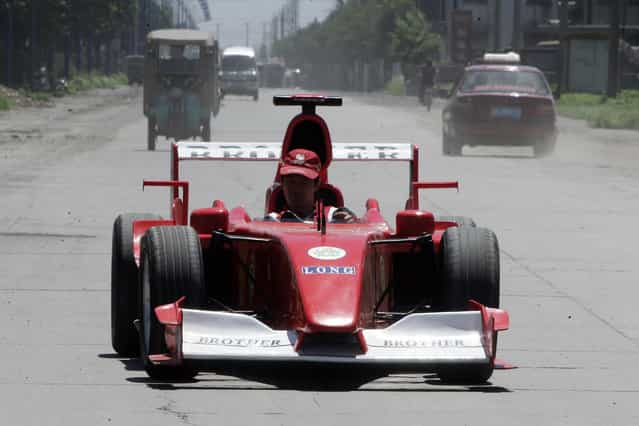
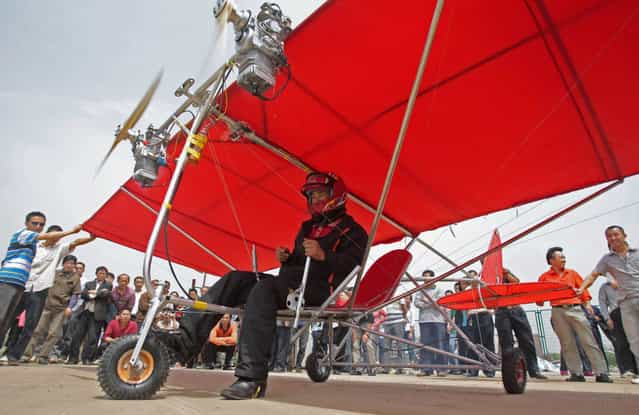

![A worker polishes the surface of an unfinished miniature submarine at a workshop of Zhang Wuyi, a local farmer who is interested in scientific inventions, in Qingling village, on the outskirts of Wuhan, capital of central China's Hubei province August 29, 2011. Zhang has successfully tested his self-made miniature submarine "Shuguang Hao", which is 3.6 m (12 feet) long, 1.8 m (6 feet) high, has a maximum diving depth of 20 m (65 feet), can travel at a speed of 20 km per hour for 10 hours underwater and is shaped as a dolphin. [I hope to sell my submarine as a civil product with the price of about 100,000 yuan ($15,670) after safety tests, and a merchant has decided to order one in this month], Zhang said. (Photo by Jason Lee/Reuters) A worker polishes the surface of an unfinished miniature submarine at a workshop of Zhang Wuyi, a local farmer who is interested in scientific inventions, in Qingling village, on the outskirts of Wuhan, capital of central China's Hubei province August 29, 2011. Zhang has successfully tested his self-made miniature submarine "Shuguang Hao", which is 3.6 m (12 feet) long, 1.8 m (6 feet) high, has a maximum diving depth of 20 m (65 feet), can travel at a speed of 20 km per hour for 10 hours underwater and is shaped as a dolphin. [I hope to sell my submarine as a civil product with the price of about 100,000 yuan ($15,670) after safety tests, and a merchant has decided to order one in this month], Zhang said. (Photo by Jason Lee/Reuters)](http://img.gagdaily.com/uploads/posts/app/2013/thumbs/0000fad6_medium.jpg)
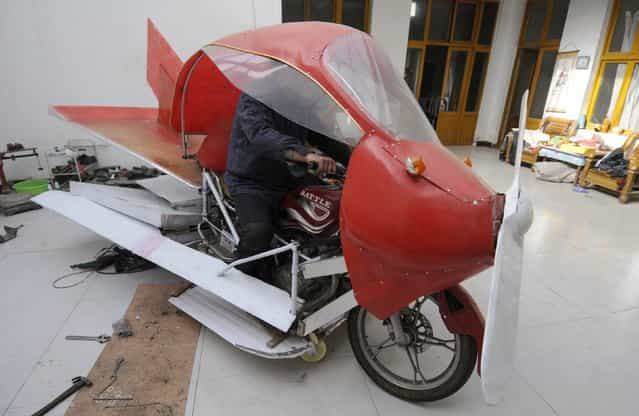
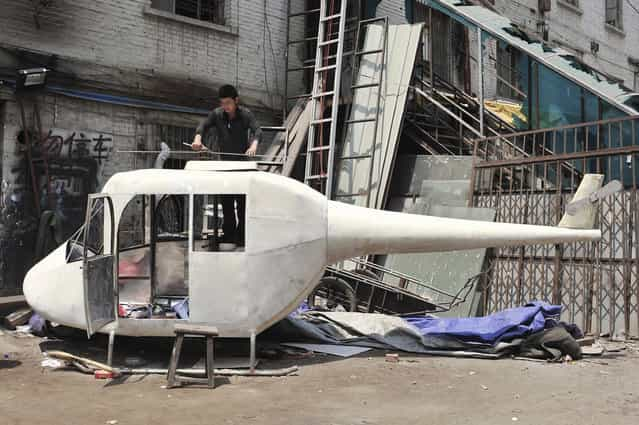
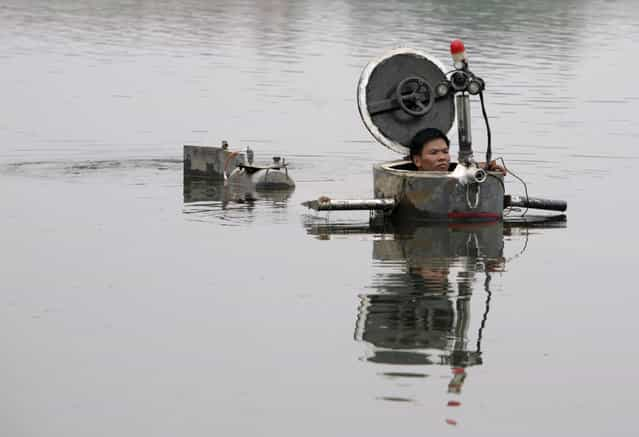
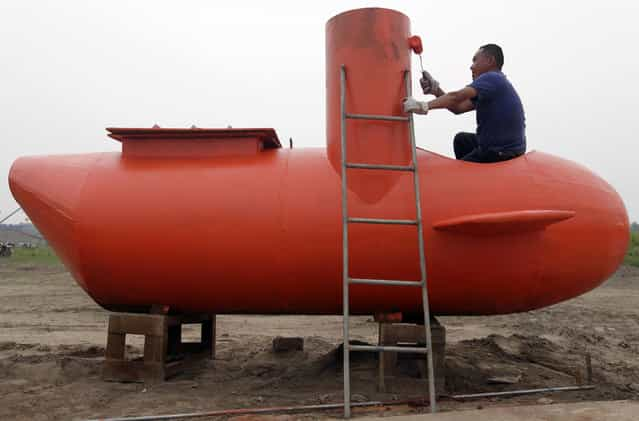
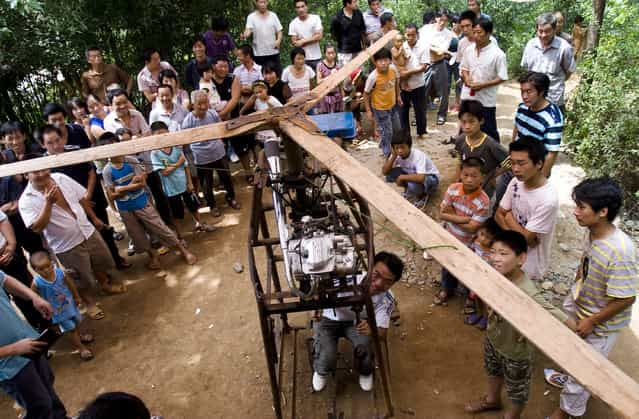
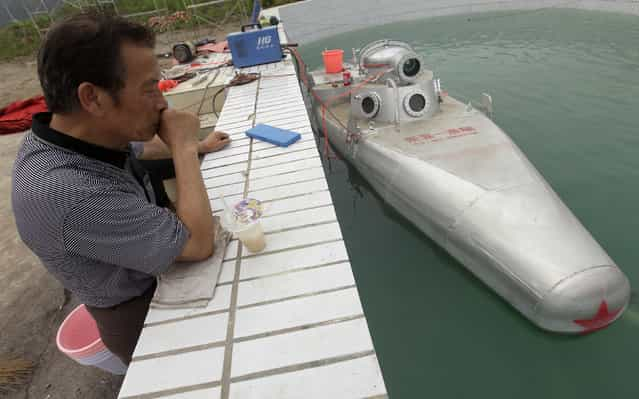

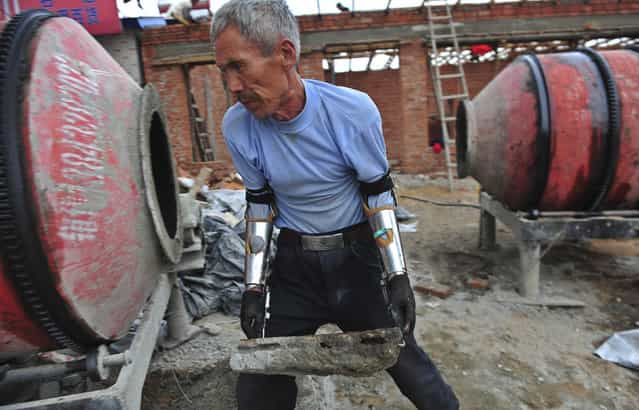
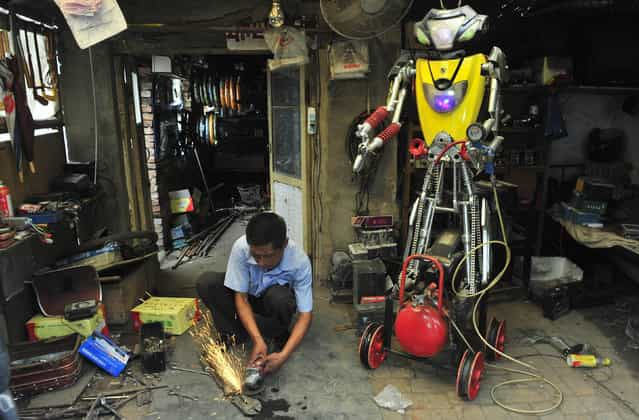
![A self-styled Chinese inventor tests his homemade helicoptor next to his apartment in Beijing June 25, 2003. Yu Jun follows in the footsteps of his younger brother who lost his life in a national park in central China at the end of a 20 year search for the legendary [Bigfoot], and intends to continue the quest from the sky. Without any formal education in aerospace science, Yu Jun spent five years constructing the helicopter from spare parts belonging to a dilapidated [Lada] automobile (in back). (Photo by Reuters/China Photo) A self-styled Chinese inventor tests his homemade helicoptor next to his apartment in Beijing June 25, 2003. Yu Jun follows in the footsteps of his younger brother who lost his life in a national park in central China at the end of a 20 year search for the legendary [Bigfoot], and intends to continue the quest from the sky. Without any formal education in aerospace science, Yu Jun spent five years constructing the helicopter from spare parts belonging to a dilapidated [Lada] automobile (in back). (Photo by Reuters/China Photo)](http://img.gagdaily.com/uploads/posts/app/2013/thumbs/0000fae0_medium.jpg)
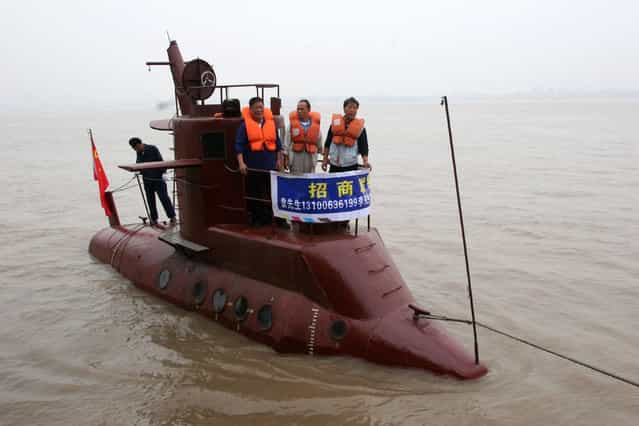


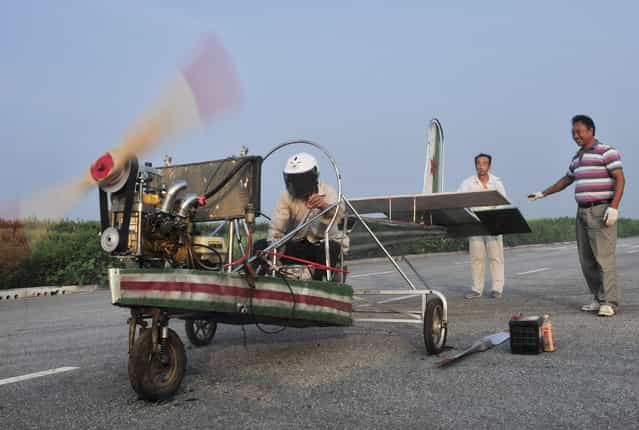
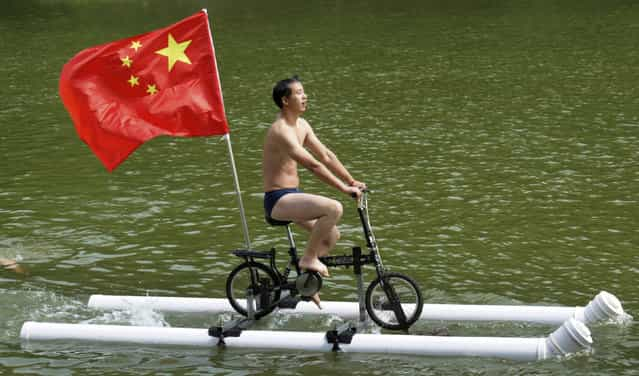
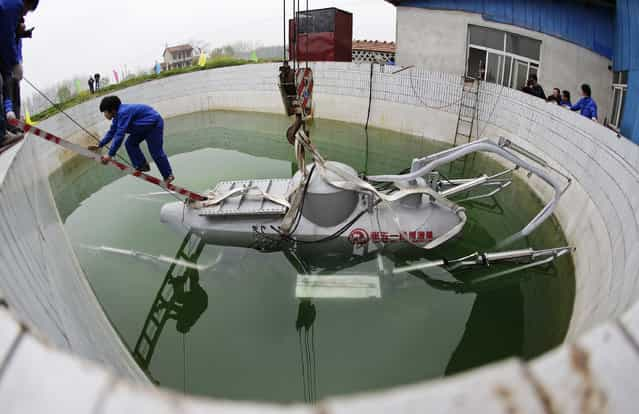
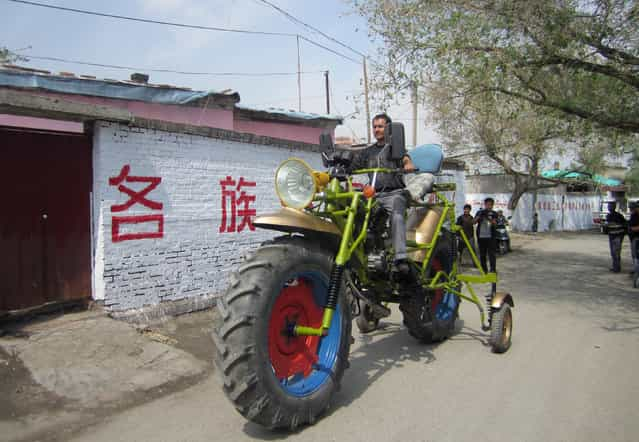
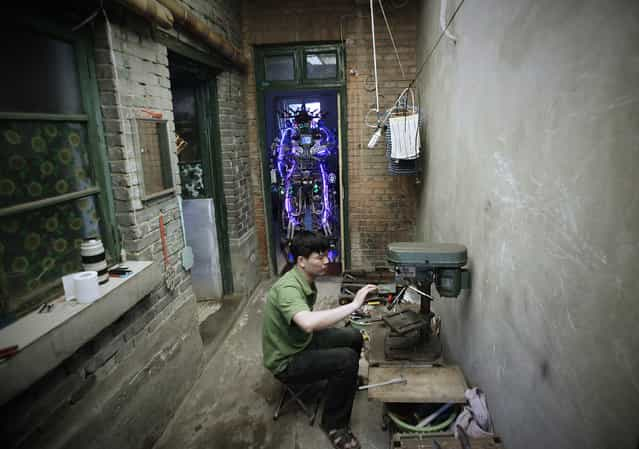



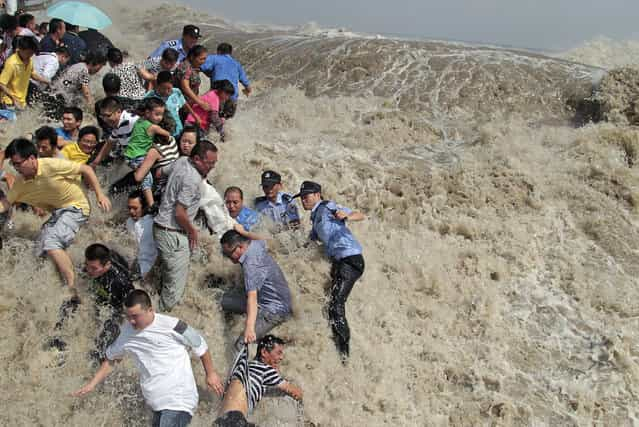
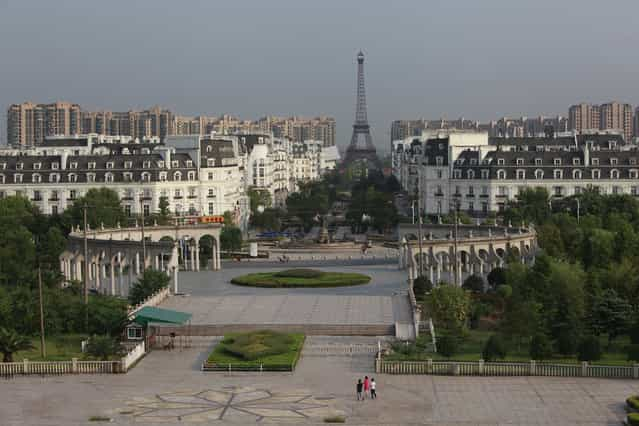
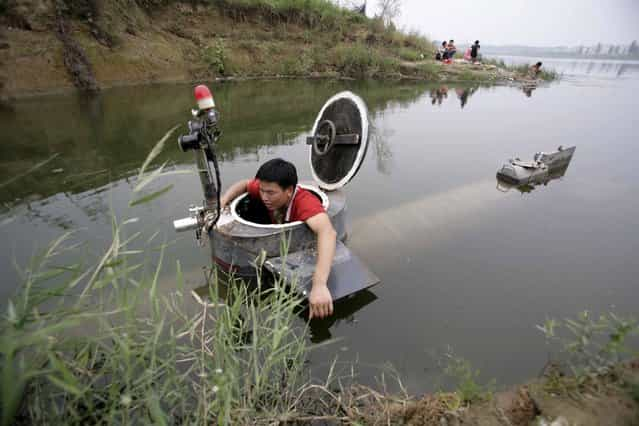

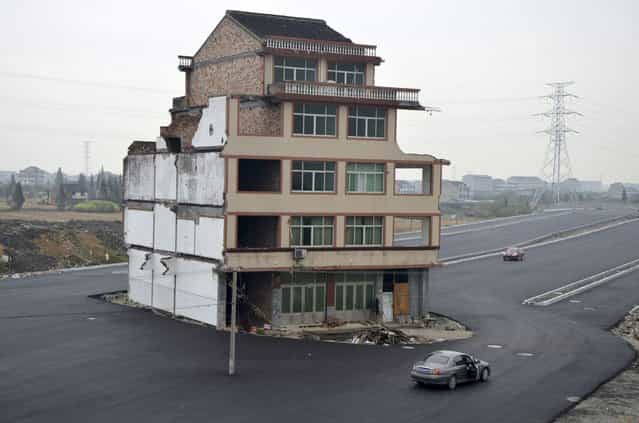

![Rare [Hybrid] Total Solar Eclipse Rare [Hybrid] Total Solar Eclipse](http://img.gagdaily.com/uploads/posts/fact/2013/short/00010c55_medium.jpg)






